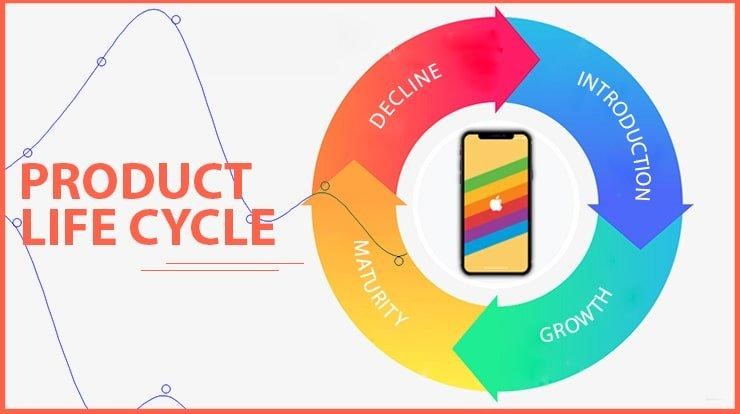Article Outline
- Introduction
- Defining the Product Life Cycle
- Stages of the Product Life Cycle
- Introduction
- Growth
- Maturity
- Decline
- Importance of Understanding the Product Life Cycle
- Strategies for Each Stage
- Introduction Stage Strategies
- Growth Stage Strategies
- Maturity Stage Strategies
- Decline Stage Strategies
- Real-Life Examples
- Successful Product Life Cycles
- Lessons from Failed Product Life Cycles
- Factors Influencing Product Life Cycle
- Technological Advances
- Consumer Behavior
- Market Trends
- Case Studies
- Analyzing Noteworthy Product Life Cycles
- Challenges and Opportunities
- Navigating Challenges
- Seizing Opportunities
- Adapting Marketing Efforts
- Tailoring Strategies to Product Life Cycle
- Utilizing Digital Marketing
- Future Trends in Product Life Cycle Management
- Conclusion
- FAQs
- What is the product life cycle?
- Why is understanding the product life cycle important for businesses?
- Can a product’s life cycle be extended?
- How do technological advances impact product life cycles?
- Where can I learn more about successful product life cycle management?
Product Life Cycle: Navigating the Evolution of Success
Introduction
In the dynamic landscape of business, understanding the concept of a product’s life cycle is paramount. It serves as a roadmap, guiding businesses through the various stages of a product’s existence in the market. Let’s delve into the intricacies of the product life cycle and explore why comprehending it is crucial for sustainable success.
Stages of the Product Life Cycle
Introduction
The birth of a product marks the introduction stage, characterized by slow growth, high marketing costs, and limited profitability. Companies invest heavily in promotion to create awareness and stimulate demand.
Growth
As the product gains traction, the growth stage kicks in. Sales soar, and the market expands. This phase demands strategies to solidify market share, enhance product features, and capitalize on the growing demand.
Maturity
In the maturity stage, the market stabilizes, and competition intensifies. Companies focus on maintaining their market share through innovation, cost management, and effective marketing campaigns.
Decline
The eventual decline stage signals a decrease in sales and market saturation. Businesses must decide whether to revitalize the product, diversify, or gracefully exit the market.
Importance of Understanding the Product Life Cycle
Understanding the product life cycle equips businesses to make informed decisions at each stage. It aids in resource allocation, marketing planning, and overall strategy development.
Strategies for Each Stage
Introduction Stage Strategies
Capturing attention is crucial. Utilize aggressive marketing campaigns, offer promotions, and establish a strong brand presence.
Growth Stage Strategies
Focus on differentiation, quality improvement, and expanding market share. Consider international expansion to maximize growth potential.
Maturity Stage Strategies
Maintain competitiveness through product enhancements, cost optimization, and strategic partnerships.
Decline Stage Strategies
Evaluate options for the declining product—rebranding, diversification, or an orderly exit strategy.
Real-Life Examples
Successful Product Life Cycles
Explore iconic examples like Apple’s iPhone, tracing its evolution from introduction to maturity with innovative features and marketing strategies.
Lessons from Failed Product Life Cycles
Analyze the downfall of once-prominent products, learning from their mistakes and identifying factors that led to their decline.
Factors Influencing Product Life Cycle
Technological Advances
Examine how rapid technological advancements can accelerate or shorten a product’s life cycle.
Consumer Behavior
Understand the impact of evolving consumer preferences on the longevity of a product in the market.
Market Trends
Stay attuned to market trends, as they can significantly influence a product’s success or decline.
Case Studies
Analyzing Noteworthy Product Life Cycles
Dive into case studies of products that navigated the life cycle effectively, drawing valuable insights for your business.
Challenges and Opportunities
Navigating Challenges
Explore common challenges faced during each stage and strategies to overcome them.
Seizing Opportunities
Identify opportunities for growth and success unique to each stage of the product life cycle.
Adapting Marketing Efforts
Tailoring Strategies to Product Life Cycle
Discover how adjusting marketing strategies in alignment with the product life cycle can enhance overall effectiveness.
Utilizing Digital Marketing
Explore the role of digital marketing in revitalizing products and reaching new audiences throughout the life cycle.
Future Trends in Product Life Cycle Management
Stay ahead by exploring emerging trends in product life cycle management, including sustainability, AI integration, and data-driven decision-making.
Conclusion
In the ever-evolving business landscape, understanding and effectively managing a product’s life cycle is the key to sustained success. By navigating each stage strategically, businesses can adapt to challenges, seize opportunities, and ensure longevity in the market.
FAQs
- What is the product life cycle?
- The product life cycle is a concept that describes the stages a product goes through from introduction to decline in the market.
- Why is understanding the product life cycle important for businesses?
- Understanding the product life cycle helps businesses make informed decisions, allocate resources effectively, and develop strategic plans for sustainable success.
- Can a product’s life cycle be extended?
- Yes, through strategies such as product innovation, rebranding, and entering new markets, a product’s life cycle can be extended.
- How do technological advances impact product life cycles?
- Rapid technological advancements can accelerate or shorten a product’s life cycle, requiring businesses to adapt quickly to stay competitive.
- Where can I learn more about successful product life cycle management?
- Explore case studies, industry reports, and reputable business publications to gain insights into successful product life cycle management.



